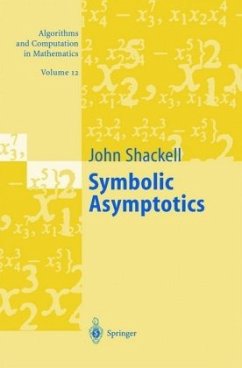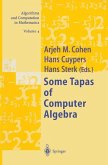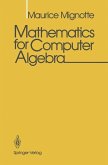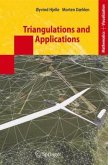Symbolic asymptotics has recently undergone considerable theoretical development, especially in areas where power series are no longer an appropriate tool. Implementation is beginning to follow.
The present book, written by one of the leading specialists in the area, is currently the only one to treat this part of symbolic asymptotics. It contains a good deal of interesting material in a new, developing field of mathematics at the intersection of algebra, analysis and computing, presented in a lively and readable way. The associated areas of zero equivalence and Hardy fields are also covered.
The book is intended to be accessible to anyone with a good general background in mathematics, but it nonetheless gets right to the cutting edge of active research. Some results appear here for the first time, while others have hitherto only been given in preprints.
Due to its clear presentation, this book is interesting for a broad audience of mathematicians and theoretical computer scientists.
The present book, written by one of the leading specialists in the area, is currently the only one to treat this part of symbolic asymptotics. It contains a good deal of interesting material in a new, developing field of mathematics at the intersection of algebra, analysis and computing, presented in a lively and readable way. The associated areas of zero equivalence and Hardy fields are also covered.
The book is intended to be accessible to anyone with a good general background in mathematics, but it nonetheless gets right to the cutting edge of active research. Some results appear here for the first time, while others have hitherto only been given in preprints.
Due to its clear presentation, this book is interesting for a broad audience of mathematicians and theoretical computer scientists.
From the reviews: "This book is the first text book about symbolic asympotics, written by one of its major contributors. It deals with the question to calculate limits and asymptotic Expansions of real functions symbolically. ... The book contains a wealth of information on symbolic asymptotics. It fills a gap in the literature and should be found in every library. The user of a computer algebra system who is interested to understand the output of a command like Maple's asympt finds much interesting information. Actually many users might not even be aware about the complexity of such a command." Wolfram Koepf, Computeralgebra Rundbrief, October 2005, Issue 37 "This book comprises the research of Professor Shackell in this field over the last 20 years ... . it provides a new presentation which is easier to understand and overall comes highly recommended. ... this book makes a very good starting place indeed. ... Examples, are fairly plentiful, and usually very helpful, with a good level of detail in the working." (James C. Beaumont, SIGACT News, Vol. 38 (4), 2007)








